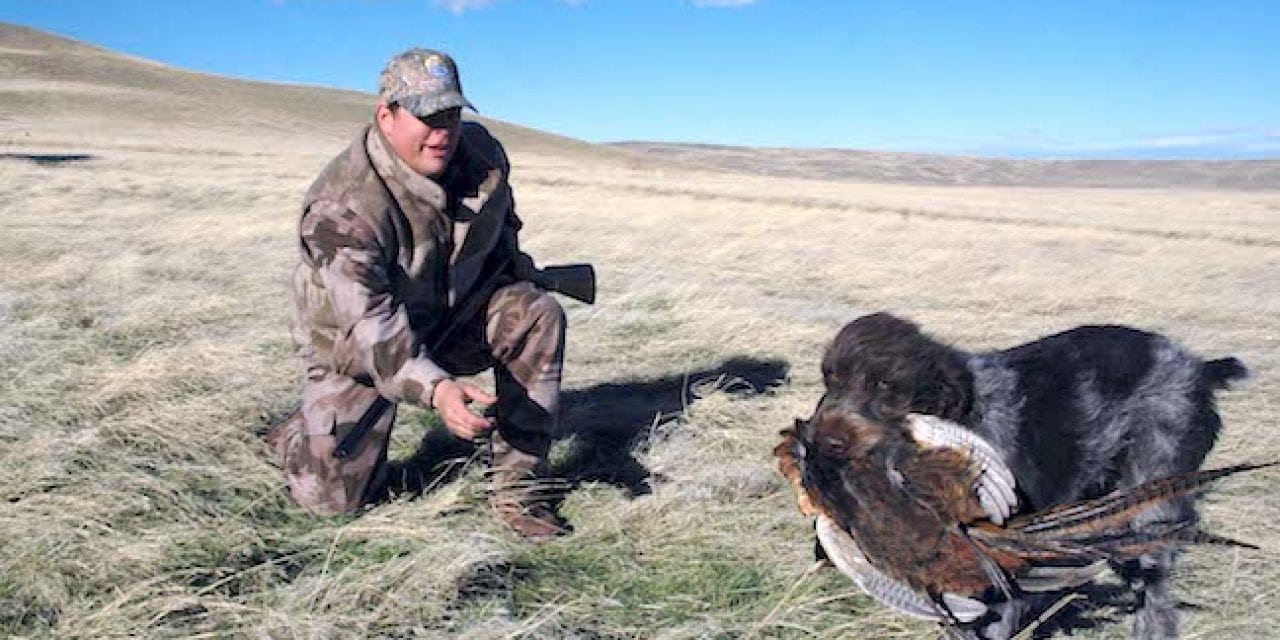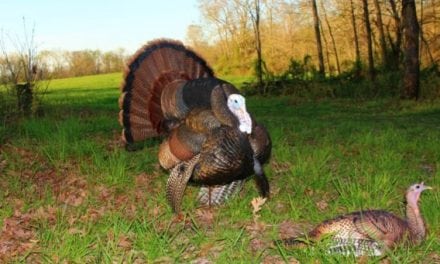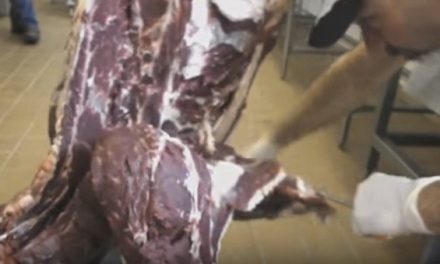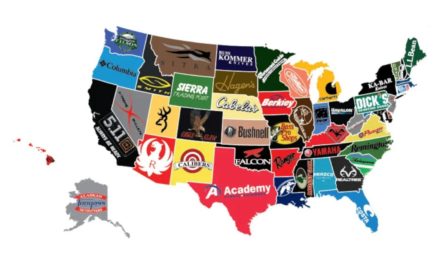If you’re searching for good bird hunting in Nevada and Utah, don’t overlook these opportunities.
In many sections of Utah and Nevada where you’ll find quail and chukars, you’ll need to put on your big boy britches and plan to do plenty of hiking and climbing.
Quail and chukar hunting in these two states has been compared to sheep hunting without the advantage of time to rest while you’re glassing.
However, there are great opportunities available for bird hunters who are willing to put in the legwork.
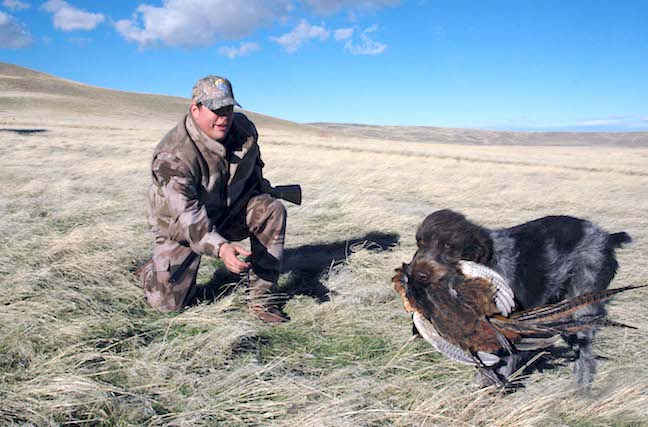
A good dog can help you maximize your hunting effort across vast landscapes. (Photo by John E. Phillips)
UTAH
Utah is about two-thirds public land, including the U.S. Forest Service, Bureau of Land Management and state lands. So, the state provides numerous places to hunt upland birds.
Jason Robinson, upload game coordinator for the state of Utah, reported that Utah’s quail hunting for 2017 should be very good.
“Our state homes Gambel’s quail, limited mostly to the southwestern section of the state, along the Arizona border in Washington County, around Joshua trees,” Robinson noted. “Plenty of BLM land is there that’s open to the public. Reproduction for these quail has been good due to the very wet weather in the spring and early summer.” Wildlife officials expect a good harvest this fall and winter for the Gambel’s quail.
“The other species of quail we have in Utah include California (valley) quail that are scattered throughout the state, with the heaviest populations around our urban centers, Salt Lake City and Provo and in Salt Lake and Utah counties,” Robinson noted. “The opportunity to hunt these quail is somewhat limited, because their range doesn’t encompass much public ground, and primarily they remain on private lands. These quail love back yards and urban areas. The winter of 2017 was somewhat harder on the valley quail than the Gambel’s due to heavy snowfall. But other counties where valley quail are found are Duchesne and Uintah.”
Robinson explained that wild chukars, a type of partridge that’s a part of the pheasant family, are scattered throughout Utah in large and robust numbers.
“Utah is coming off two fantastic years of chukar hunting in 2015 and 2016,” Robinson reported. “In the central and southern parts of Utah, I predict we’ll have average to better-than-average chukar hunting in 2017. However, the northern section of Utah will have average to below-average chukar hunting.”
Robinson mentioned that to enjoy the best chukar hunting, stay west of I-15 in the counties of Tooele, Juab, Millard and Beaver. For pheasants, farmland and wetland areas are good bets, he added.
“Utah does home some wild pheasants, scattered throughout our agricultural regions,” Robinson advised. “Some state wetlands waterfowl management areas offer good pheasant hunting, especially around the Great Salt Lake, Utah Lake and Cache Valley Lake. The pheasant population in northern part of Utah probably got knocked back somewhat last year due to the heavy snow. We also have a fairly large program here in Utah where we release pen-raised rooster pheasants on our state wildlife management areas (WMAs) — about 55 properties across the state,” he reported.
The northern region of the state features the most pheasant hunting,” Robinson continued. One of the best ways to identify good pheasant hunting is to go to the Utah Division of Wildlife Resources website, find the upland game page, click on that link and go to the online pheasant map, he noted.
Then you can pick out the spots you want to hunt, Robinson advised, noting that “Utah’s very best pheasant hunting will be on the waterfowl areas on the eastern side of the Great Salt Lake.”
Robinson reported that Utah also has a good population of two types of forest grouse — ruffed and dusky (blue). “In my opinion, Utah has top-notch forest grouse hunting,” he noted. “I-15 runs down through the center of Utah, so some of the best places to hunt are the mountains all along I-15 to the east. Dusky grouse will be found in canyons and on mountainsides in that corridor.”
Hunters mention they locate the most ruffed grouse along the Wasatch Plateau and the Uinta Mountains in or close to stands of aspens. The duskys live throughout Utah in higher elevations but particularly in Cache County, the Wasatch Plateau and regions around Cedar City.

Gambel’s, Mearns’ and scaled quail are among the popular desert game birds. (Photo by John E. Phillips)
NEVADA
Cary Jellison of G & J Outdoors explained: “I guide hunts all over Nevada for chukars and Gambel’s quail. We do most of our chukar hunting in northern Nevada, and we primarily hunt Gambel’s quail near Las Vegas. But since Nevada is 93 percent public lands, chukars and quail are all across the state on public lands. Winnemucca, the California border and the northern and the southern sections of the state offer good quail hunting, and mountain quail live around Reno and especially in Area 18.”
Nevada hunters mentioned that in 2012-2014, the state experienced a severe drought that knocked the quail and other upland bird populations back. But 2015 and 2016 saw some very good quail hunting. Most hunters expect the good hunting for upland birds to continue in 2017.
“Last year, a winter storm pushed the chukars down to the valley floor, something that doesn’t happen often,” Jellison reported. “If Nevada receives cold winter storms right after the young birds hatch, that weather can wipe out a large population of our quail.”
One of the few places in Nevada with pheasants is Paradise Valley, but those birds are few and spread out. Jellison doesn’t guide wild pheasant hunts, since he’s learned that the valley, the mountain and the Gambel’s quail and the chukars are far more dependable to hunt.
“However, we don’t generally target mountain quail, because of their two- bird limit,” Jellison noted. “When we’re hunting chukars, we’ll take them and valley quail on the same day.”
Jellison prefers Brittany Spaniels for hunting both Gambel’s and chukars, mainly due to his buddy, Joe Gower, who’s “a phenomenal dog trainer,” he advised.
“Hunting chukars and quail in Nevada is fun, but it’s not a sport for the faint of heart,” the guide continued. “You’ve got to be in good shape. Although hunters consider sheep hunting tough, I believe that chukar hunting is even harder. Chukars and sheep live in the same terrain. However, when you’re sheep hunting, you spend much of your time sitting on your butt, looking through your binoculars. When you’re chukar hunting, you’re walking the entire time.”
Jellison emphasized that hunters must remember they’re hunting wild birds, and no one can predict how many birds they’ll take. “One client hunted three days with me, and we took a limit of chukars all three days. He booked a hunt for the next year, and we only took three chukars in three days. However, he wasn’t disappointed. We worked hard, and that year chukars were hard to find. Although I always work hard to locate and flush birds for my clients, I can’t guarantee what wild birds will do.”
Bud Ogan of On Point Guide Service in Nevada explained: “We hunt Gambel’s, scaled and Mearns’ quail and chukars, but generally the Gambel’s are the easiest to find.” The best Nevada chukar hunting, he noted, is from mid-state north.
“I’ve been guiding for 18 years and spend time every summer scouting for quail, starting about mid-June,” Ogan advised. “In the heat, the birds move into thick cover for shade and shelter from the sun. But in the early mornings, the birds usually are feeding or going to or away from water, and I can find them.”
The guide said he keeps a journal of the numbers of chicks he sees each day and where.
“You never can know exactly where birds show up,” Ogan continued. “My hunts are all for wild birds and last for three days. I tell my hunters, ‘You’ll usually have one day that’s great bird hunting, another day that’s fairly good and a third day that’s not so good. If you’re looking for three great days of bird hunting, visit a preserve.’”
Ogan also prefers to quail hunt with Brittany Spaniels but does have one pointer he likes to hunt. Brittanys will hunt closer to the guide and check in regularly Ogan observes.
“I enjoy hunting chukars more than quail,” Ogan said. “I get a thrill when a group of chukars jump straight up in the air, almost like quail.”
Ogan mentioned that generally his hunters rarely get single points on chukars but instead get covey points.
“I hunt many flattop mountains, and most of the chukars we locate will be on their edges,” he advised. “When we flush those chukars, they’ll go over those edges into deep canyons, and there’s no point in going after them.”
Ogan does most of his quail hunting where he leases a private 10,000-acre ranch that homes scaled, Mearns’ and Gambel’s quail on it. He reported that the problem with Gambel’s quail in southern Nevada is that habitat is good for Mearns’ but just OK for the Gambel’s.
Ogan mentioned that most of the public land he hunts has good bird hunting if you’re willing to get your truck scratched up by going into places others won’t go. Also, look for public lands at least 80 to 100 miles away from big cities.
“Overall I think Nevada will have a good bird season this year,” Ogan noted.
The state’s website for the Nevada Department of Wildlife includes some information hunters could find useful when planning a hunt. The website mentioned that the last couple of years’ improved winter snow accumulations, particularly in 2016, after several years of drought, “should translate into good upland bird production.”
Traditionally the season for hunting Nevada’s upland birds has been chukars and quail from October through the first Sunday in February, pheasants during November, and dusky and ruffed grouse from September through December. No standardized surveys are conducted on the grouse, just in the field observations. In 2015, there was concern over the loss of coniferous trees in the dusky grouse range in central and eastern Nevada that might impact grouse numbers.
While desert bird hunts can offer a challenge, there are good opportunities to be had for hunters who are mentally and physically prepared. Using resources that are available to hunters through the state game agencies and other outlets can help you narrow down your target area when planning a bird hunt. Some time spent researching can often translate to more time hunting and greater success. Employing the help of a good guide service is also an option many hunters choose.
Whatever type of hunt you plan, guides, hunters and wildlife officials agree that physical preparation can be just as important as other research and planning you conduct prior to a hunt. In often-unforgiving and rugged terrain, physical fitness can be the difference between getting to the locations where birds often reside or not. If you are prepared to cover the miles, more opportunities to locate birds will be available to you.
For hunters who have prepared beforehand and have formulated a game plan, there is some great hunting to be had in the desert states for a variety of species. Now it’s time for you to get out and earn your birds at one of the locations noted here or another hotspot near you.
The post Top Desert Bird Hunts 2017 appeared first on Game & Fish.

